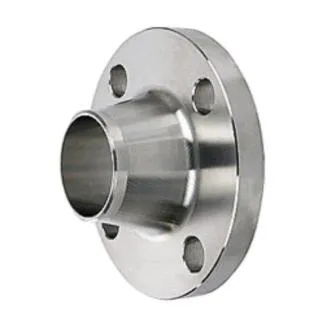-
Cangzhou Yulong Steel Co., Ltd.
-
Phone:
+86 13303177267 -
Email:
admin@ylsteelfittings.com
- English
- Arabic
- Italian
- Spanish
- Portuguese
- German
- kazakh
- Persian
- Greek
- French
- Russian
- Polish
- Thai
- Indonesian
- Vietnamese
- Zulu
- Korean
- Uzbek
- Hindi
- Serbian
- Malay
- Ukrainian
- Gujarati
- Haitian Creole
- hausa
- hawaiian
- Hebrew
- Miao
- Hungarian
- Icelandic
- igbo
- irish
- Japanese
- Javanese
- Kannada
- Khmer
- Rwandese
- Afrikaans
- Albanian
- Amharic
- Armenian
- Azerbaijani
- Basque
- Belarusian
- Bengali
- Bosnian
- Bulgarian
- Catalan
- Cebuano
- China
- China (Taiwan)
- Corsican
- Croatian
- Czech
- Danish
- Esperanto
- Estonian
- Finnish
- Frisian
- Galician
- Georgian
- Kurdish
- Kyrgyz
- Lao
- Latin
- Latvian
- Lithuanian
- Luxembourgish
- Macedonian
- Malgashi
- Malayalam
- Maltese
- Maori
- Marathi
- Mongolian
- Myanmar
- Nepali
- Norwegian
- Norwegian
- Occitan
- Pashto
- Dutch
- Punjabi
- Romanian
- Samoan
- Scottish Gaelic
- Sesotho
- Shona
- Sindhi
- Sinhala
- Slovak
- Slovenian
- Somali
- Sundanese
- Swahili
- Swedish
- Tagalog
- Tajik
- Tamil
- Tatar
- Telugu
- Turkish
- Turkmen
- Urdu
- Uighur
- Welsh
- Bantu
- Yiddish
- Yoruba

Dec . 05, 2024 16:49 Back to list
Similar Types and Applications of Threaded T Fittings in Plumbing Systems
Understanding Threaded T Fittings A Comprehensive Overview
In the realm of plumbing and piping, efficient connection methods can significantly enhance the performance and reliability of systems. One such essential component widely used in various applications is the threaded T fitting. This article aims to provide an in-depth look at threaded T fittings, including their design, benefits, applications, and installation considerations.
What is a Threaded T Fitting?
A threaded T fitting, often referred to as a T joint or T connector, is a type of pipe fitting that allows for fluid flow in three different directions. It is shaped like the letter “T”, with one inlet and two outlets, or vice versa. The unique design facilitates the branching of a pipeline, making it an essential component in plumbing, heating, ventilation, and air conditioning (HVAC) systems.
The term “threaded” refers to the method of connection used in these fittings. Threaded fittings typically feature male and female threads on their ends, allowing them to be screwed onto pipes or other fittings securely. This threaded connection offers a reliable and leak-proof seal, making it a preferred choice in many installations.
Materials Used in Threaded T Fittings
Threaded T fittings are manufactured from various materials, each having distinct advantages and ideal applications
1. Brass Brass fittings are highly resistant to corrosion and are ideal for water systems. They also provide excellent durability and are commonly used in household plumbing.
2. Stainless Steel Known for its strength and resistance to rust, stainless steel threaded T fittings are often used in industrial and marine applications where durability is critical.
3. PVC Polyvinyl chloride (PVC) fittings are lightweight and easy to install. They are particularly popular in residential irrigation and drainage systems due to their affordability and chemical resistance.
4. Copper Copper fittings offer excellent thermal conductivity and are often used in HVAC systems and refrigeration applications.
Benefits of Using Threaded T Fittings
1. Easy Installation The threaded design allows for a straightforward installation process, requiring only the appropriate tools (such as a wrench) to tighten the fittings securely onto the pipes. This ease of installation can save time and labor costs.
2. Leak-Proof Seal The threaded connection creates a tight seal that minimizes the risk of leaks, ensuring reliable fluid transport and enhancing system efficiency.
threaded t fitting

4. Customization Fittings can be tailored to meet specific requirements, such as different threading standards (NPT, BSP, etc.) or materials, providing flexibility for different projects.
Applications of Threaded T Fittings
Threaded T fittings are utilized across various sectors, including
- Residential Plumbing In home plumbing systems, threaded T fittings are commonly used to connect pipes for water distribution and drainage systems.
- HVAC In heating and cooling systems, they allow the efficient routing of refrigerants and air, contributing to overall system effectiveness.
- Industrial Applications In factories and manufacturing plants, threaded T fittings are used in liquid and gas transportation systems, ensuring reliable flow in complex piping networks.
- Irrigation They are also found in agricultural and landscape irrigation systems, helping to distribute water evenly across fields or gardens.
Installation Considerations
When installing threaded T fittings, there are several factors to keep in mind
1. Compatibility Ensure that the fitting matches the pipe material and size to achieve a secure connection.
2. Pipe Thread Sealant It is often recommended to use thread sealant tape or compound on the threads to enhance the seal and prevent leaks.
3. Torque Specifications Follow the manufacturer's torque guidelines to avoid over-tightening, which can damage the fitting or the pipe.
4. Regular Maintenance Regular inspections of threaded connections can help identify potential leaks before they become major issues.
Conclusion
Threaded T fittings are indispensable components in any piping system. Their efficient design, ease of installation, and reliable performance make them a staple in both residential and industrial applications. By understanding the various materials, benefits, and installation considerations, users can make informed decisions that ensure optimal functionality and longevity for their plumbing systems. Whether you are a professional plumber or a DIY enthusiast, mastering the use of threaded T fittings will undoubtedly enhance your piping projects.
Latest news
-
ANSI 150P SS304 SO FLANGE
NewsFeb.14,2025
-
ASTM A333GR6 STEEL PIPE
NewsJan.20,2025
-
ANSI B16.5 WELDING NECK FLANGE
NewsJan.15,2026
-
ANSI B16.5 SLIP-ON FLANGE
NewsApr.19,2024
-
SABS 1123 FLANGE
NewsJan.15,2025
-
DIN86044 PLATE FLANGE
NewsApr.19,2024
-
DIN2527 BLIND FLANGE
NewsApr.12,2024
-
JIS B2311 Butt-Welding Fittings LR/SR 45°/90° /180°Seamless/Weld
NewsApr.23,2024











